Monastery of Saint-Paul-de-Mausole and asylum of Van Gogh
Cultural and historical site
30 min
shade
Description
A monastery with a church and a cloister that is very Provençal is already worth a visit. All this is worth the trip, knowing that here you can enter the room where Vincent van Gogh painted his most famous series of works. His room and artist's studio have been restored to their original state.
The artist was admitted here the year before his early death. It is worth noting that the monastery was a psychiatric hospital as early as 1605 and was privatised under the same function during the French Revolution. It is still used as a hospital today.
The church retains its Provençal Romanesque style, even though the façade was remodelled in the 18th century in Renaissance style. The Lombard Romanesque bell tower with its pyramidal roof is covered with limestone lauze. The three apses are also covered with limestone slabs.
To the east of the cloister is a garden which blooms beautifully in spring. The floor above the cloister galleries contained the asylum's private rooms overlooking the garden and cloister. Vincent van Gogh lived here.
The entry fee is EUR7 in 2022.
No reproduction is permitted without the written consent of the author. (id6667)
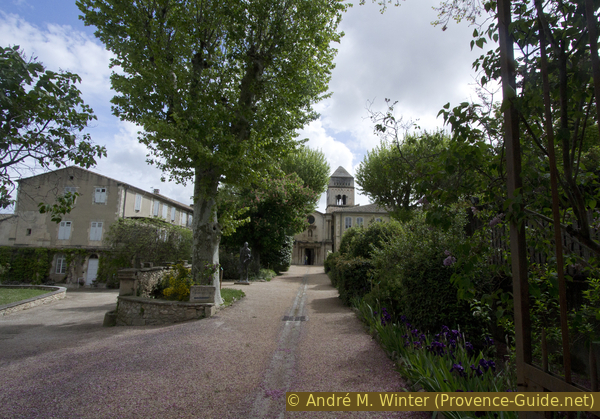
Access path to the former priory of St. Paul de Mausole
The legend
A certain Paul, fleeing the 5th century Vandal invasion, takes refuge in the diocese of Avignon. While working the land, emissaries of the church come to offer him the succession of bishop Torquantus. Paul rejects this high dignity and, thrusting his staff into the ground, declares that he will accept to be bishop when this dry banch has blossomed. Flowers blossom on the withered stick and Paul, bowing to the will manifested, becomes the bishop whose feast day is celebrated at Saint-Paul-les-Trois-Châteaux.
The historical hypothesis
The site of Saint-Paul-de-Mausole adjoins the Greco-Roman city of Glanum. At that time, a spring attracted pilgrims who came to beg the goddess Valetudo to grant them health. This pagan belief survived for centuries, until christians from Glanum founded this priory, whose mission has always been to care for rejected people, particularly the mentally ill. The priory took over from the place where the sick and pagan pilgrims rested on the way to Santiago de Compostela.
Historical certainty
In the year 982, the chapel of St. Peter mentioned in the charter of the bishop of Avignon named Warnerius was given to the Benedictine monastery of St. André. In the 11th century, a monastery dedicated to Saint Paul the Apostle and not to Saint Paul Tricastin was built around this building. From the beginning, this priory welcomed the insane, the sick and the destitute.
In 1080, the church was first called Ad Mausoleum, a special name because of its proximity to the ancient neighbouring monument, the Mausoleum of the Julii. Thanks to numerous documents preserved for a long time in the Palace of the Popes in Avignon, we can trace ten centuries of existence of this monastery in four periods:
No reproduction is permitted without the written consent of the author. (id6670)
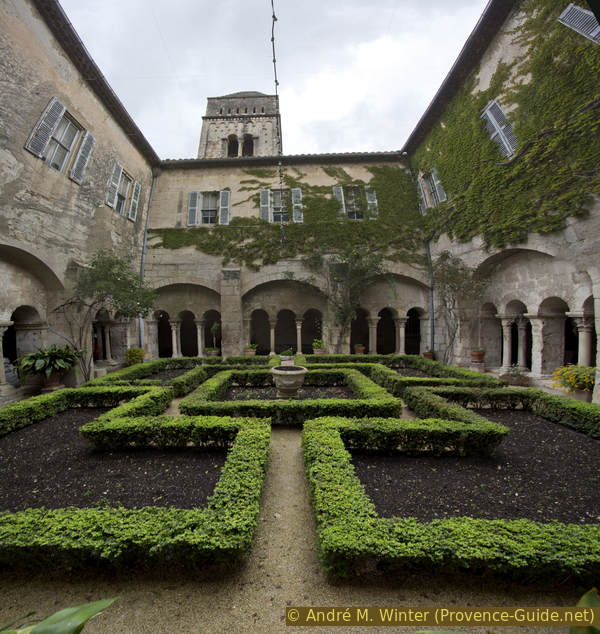
Bell tower and cloister of St. Paul de Mausole
- That of the canons and the 14 provosts from 1080 to 1317.
- That of the archdeacons from 1317 to 1605 with the numerous plunders of the 16th century.
- That of the Franciscan Observantines from 1605 to 1791. In 1768, in response to an edict by the King aimed at suppressing certain male monasteries, the Council of the Community of Saint-Rémy wrote a motion concerning Saint-Paul-de-Mausole to the Archbishop of Avignon, asking him to maintain the Franciscan monks of the mendicant order of the Observantines in perpetuity in this town, where they received boarders in their convent, people who had the misfortune of falling into insanity, and even those who were locked up by a letter of seal.
No reproduction is permitted without the written consent of the author. (id6671)
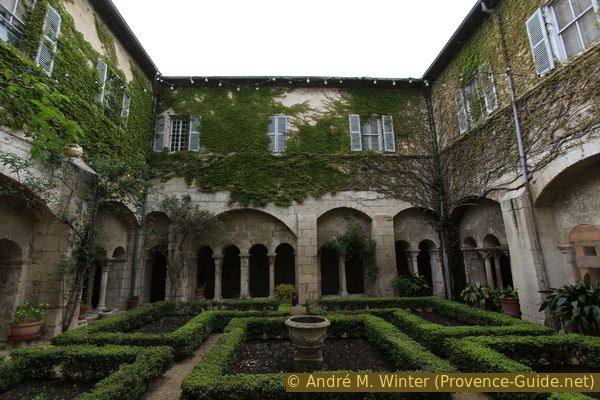
In St. Paul de Mausole cloister
- That of the laity and the religious congregations. Confiscated during the French Revolution as national property, its sale in 1791 led to the expulsion of the monks and the distrust of the families of the patients. Doctor Mercurin bought the site in 1807 and revitalized it for forty years. In 1852, the prefect of the Bouches-du-Rhône issued a decree authorising the Saint-Paul establishment as a private asylum for the insane, for 50 men and 50 women. In accordance with the law of 1838 and the ordinance of 1839, various doctors and lay people associated with the Sisters of Saint-Vincent-de-Paul, then of Saint-Joseph-de-Vesseaux from 1866, took charge of the establishment. In solidarity, they protect and develop the structure since this period in order to continue, without interruption, this ancestral mission of reception and care of the mentally ill.
No reproduction is permitted without the written consent of the author. (id6674)
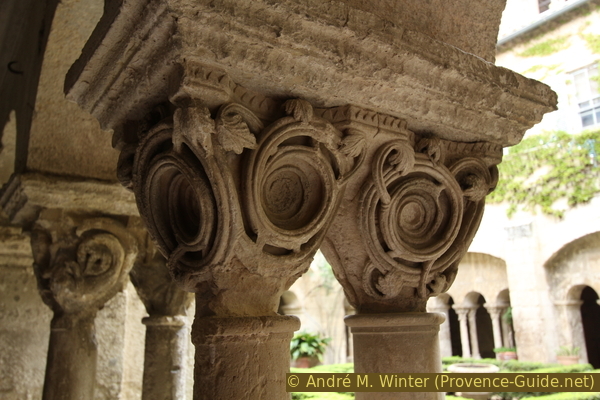
Wine branch capitals in the cloister
Access by public transport
There are about ten connections per day between Avignon and St. Rémy on line 707 and another between Arles and Cavaillon on line 704. Information under Zou! (only french). The single stop is located south-west of the city centre and is called République.
From the bus, it is possible to reach the site in 15 minutes. This route is also available on the map on this page.
Getting off the bus, we first follow the plane tree avenue counter-clockwise around the centre, a sign pointing here to Cavaillon. Then take the first right towards the Tourist Office. After a long wall on the left, we turn left into Avenue Pierre Barbier. We stay on this street and cross the small Canal des Alpilles. At the next crossroads, we turn into the Chemin Marie Gasquet (dead end sign). We keep this direction and finally walk on the path alongside the wall of the Priory of St. Paul de Mausole, which is no longer passable. Further up we come to a narrow tarmac road, here to the right and then right again to reach the entrance to the monastery.
Access by car
St. Rémy-de-Provence is displayed on all sides. Coming from Cavaillon, Avignon or Arles, you take the direction of the centre and towards Glanum. Before reaching the Roman site, turn left towards the clinic and the former priory of St. Paul de Mausole.
Parking site
There is free parking along the western wall of the site of St. Paul de Mausole and a few more spaces are found beyond the wall on the road to the south (right). If you arrive in the morning, you should find space here, as tours in the monastery begin after 9:30 am.
There is also a large car park near the site of Glanum a few metres further on the left on the road to Maussane, but it is not free.
No reproduction is permitted without the written consent of the author. (id6673)

A window into the cloister
No reproduction is permitted without the written consent of the author. (id6675)
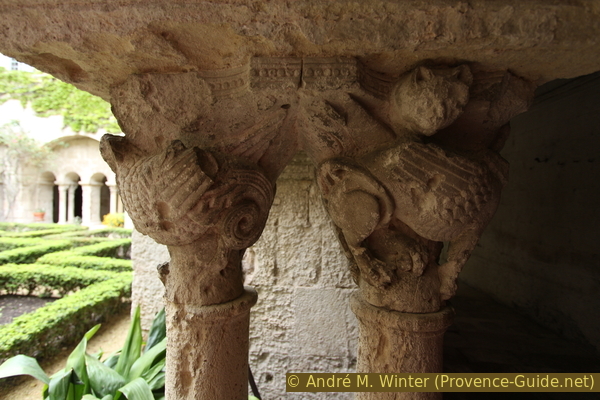
Bird capitals in the cloister
The inner cloister dates from the 11th and 12th centuries. It is one of the most remarkable in the region. The capitals are adorned with numerous symbolic themes. In the centre there is a well-kept medieval garden.
No reproduction is permitted without the written consent of the author. (id6672)
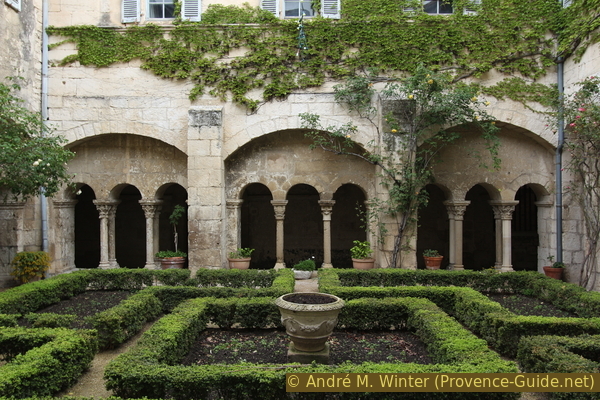
Arcades of St. Paul de Mausole cloister
The monastry was modified several times and rebuilt the last time in the 19th century.
Vincent van Gogh was interned, at his request, in the men's pavillon from May 1889 to May 1890.
The 1914/1918 war partly transformed Saint-Paul into a prisoner of war camp, or at least into a camp for internees of Alsatian origin. This is how Dr. Albert Schweitzer, famous for his life dedicated to the Africans, was assigned to residence in Saint-Paul-de-Mausole.
During the occupation of southern France from November 1942 to August 1944, Saint-Paul was used by German troops as barracks. The sick were dispersed to the mother house of the Sisters of Saint Joseph in Ardèche and to the surrounding psychiatric hospitals.
No reproduction is permitted without the written consent of the author. (id6676)
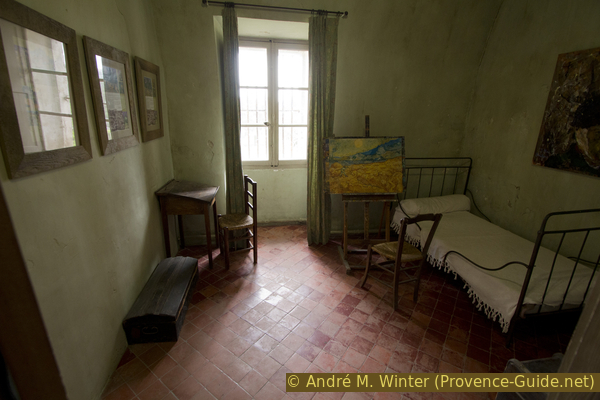
Van Gogh's room in St. Paul de Mausole
No reproduction is permitted without the written consent of the author. (id6677)
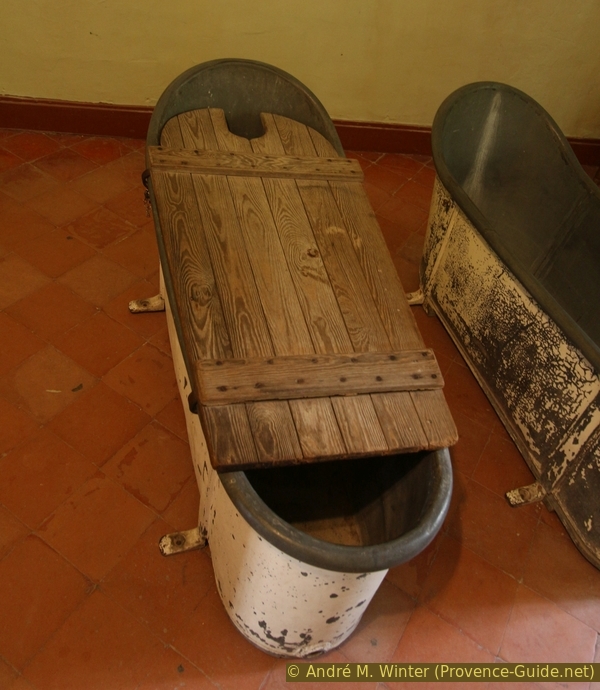
Bathtubs of the former psychiatric clinic
Faithful to its history, victorious over the trials of time, and even rejuvenated for new tasks, this solid Romanesque monastery, now a Maison de Santé managed by a non-profit association, continues to actively pursue its mission of preventing and fighting mental illness. The institution employs more than one hundred and forty people and welcomes more than one hundred and thirty patients and residents every day in the short-stay psychiatric departments (Saint-Paul and Van Gogh clinics), and the Iris Specialised Reception Centre. These were completely renovated and built between 2001 and 2005 in agreement with the Commission des Monuments Historiques and the Architecte des Bâtiments de France.
No reproduction is permitted without the written consent of the author. (id6668)
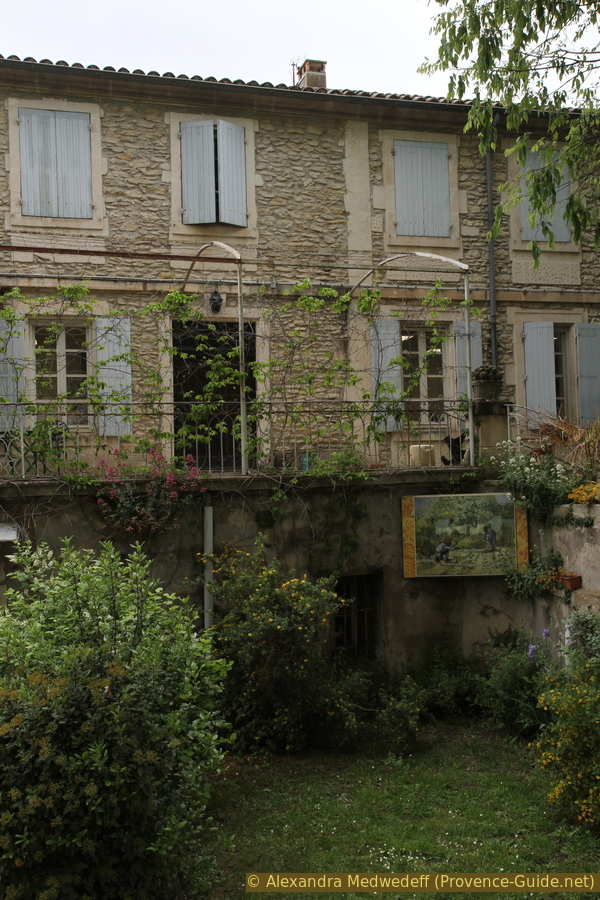
Old part of the psychiatric clinic of St. Paul de Mausole
No reproduction is permitted without the written consent of the author. (id6669)
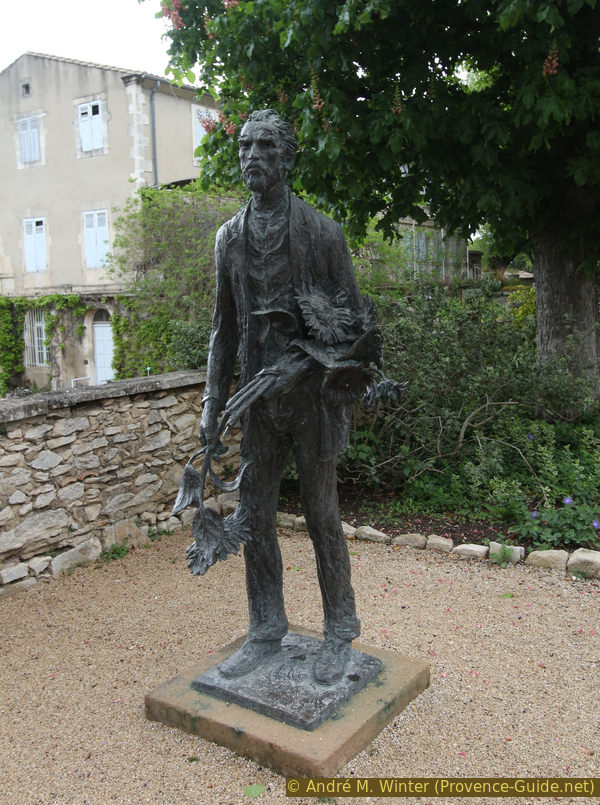
Sculpture The Sunflower Thief by Gabriel Sterk
No reproduction is permitted without the written consent of the author. (id6679)
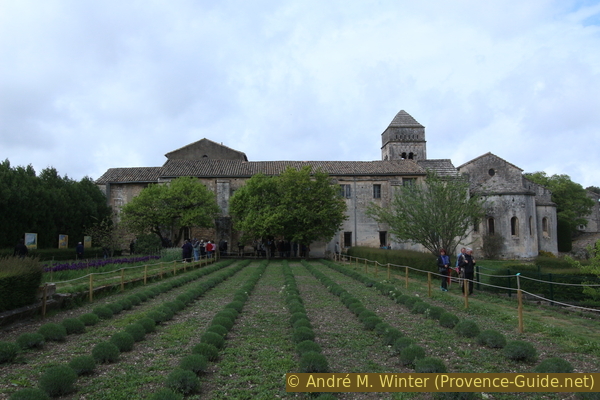
Lavender field and the former priory of St. Paul de Mausole
No reproduction is permitted without the written consent of the author. (id6678)
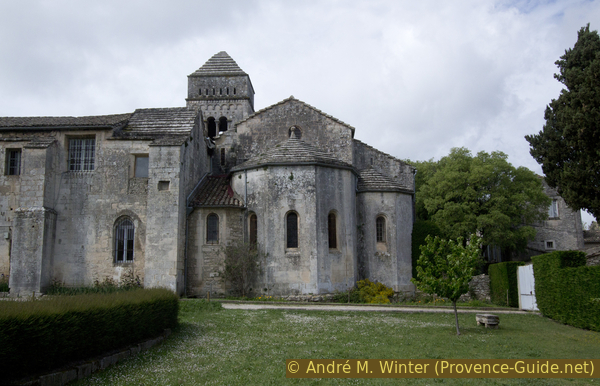
Former priory of St. Paul de Mausole seen from the garden
No reproduction is permitted without the written consent of the author. (id6680)
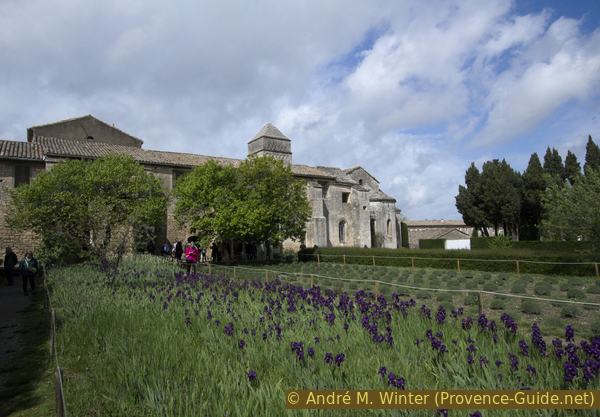
Iris field and the former priory of St. Paul de Mausole